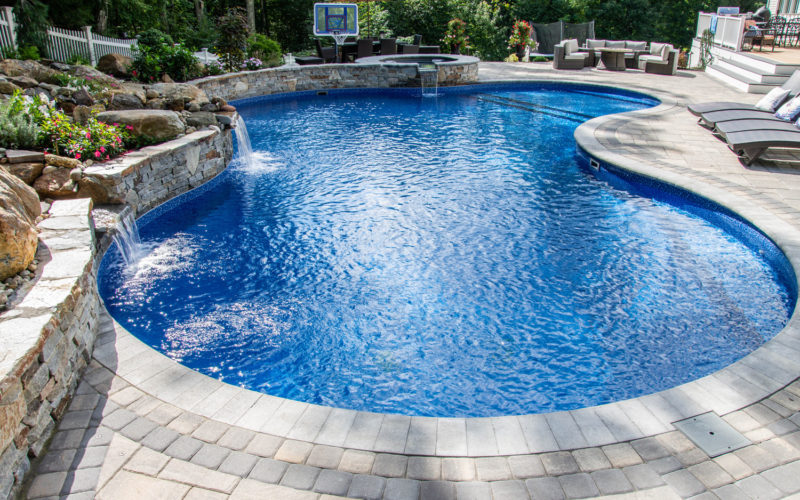Opening Your In-ground Swimming Pool
Opening Your In-Ground Swimming Pool
5 Easy Steps
Follow These Steps To Open Your In-ground Swimming Pool
If you have any concerns about opening your in-ground pool then please feel free to contact us for free professional advice. If you’re unsure of trying this yourself after reading these steps then we recommend having your pool opened by trained professionals to ensure that it is done properly.

* KB Pools Tip:
If you’re concerned about opening your pool to cloudy water then here’s a pro tip from the Krossber Brothers. When you closed your pool you probably added chlorine or other closing chemicals back in the fall. Depending on what you added, the most popular chemical that kills and prevents algae (chlorine) is most likely depleted by now. What most pool owners don’t know is that algae growth slows down significantly once the water temperature drops below sixty degrees. By the time you’re ready to open your pool we usually have had a decent thaw or two in the months leading up to spring. What most pool owners don’t realize is that their pools turned green from algae growth back during those thaws. We recommend adding some liquid chlorine under your pool cover during a thaw to help carry your clean pool into spring with a much higher chance of opening it just as clean as you closed it. This can be done by opening a corner of your pool or through the skimmer with a funnel. Just make sure not to pour it all in one spot near your liner or this could cause premature wear and tear. Good luck!
Step 1) Removing Your Pool Cover

Once the cover is free of debris go ahead and remove the water bags, or grab your safety cover removal tool to release tension on the springs if you have a safety cover. With one person on each side of the pool, grab the cover and fold it back over itself a 1/4 of the way down the pool. Repeat this process until you have completely removed the cover. We recommend spreading the cover out in your yard and using a cover conditioner to help clean and preserve the cover before you store it for the summer. For safety cover owners don’t forget to use your hex tool to lower your anchors back down. (We have long hex tools available at our store that will attach to a cordless drill so you do not have to bend over to put your anchors down.)
Step 2) Remove Your Winter Plugs

Step 3) Re-Connect Your Pump & Filter

Equipment Checklist:
- All plumbing connections lubricated & tight
- Pump housing plugs lubricated & installed
- Filter drain cap installed
- Pressure gauge & backwash hose installed
Step 5) Vacuum & Treat Your Pool

Step 4) Prime & Start Your Filter System



We hope these steps make it easy for you to get your above ground pool up and running this season. If you have any questions please don’t hesitate to ask. Feel free to leave us comments and feedback.
Thank You!
